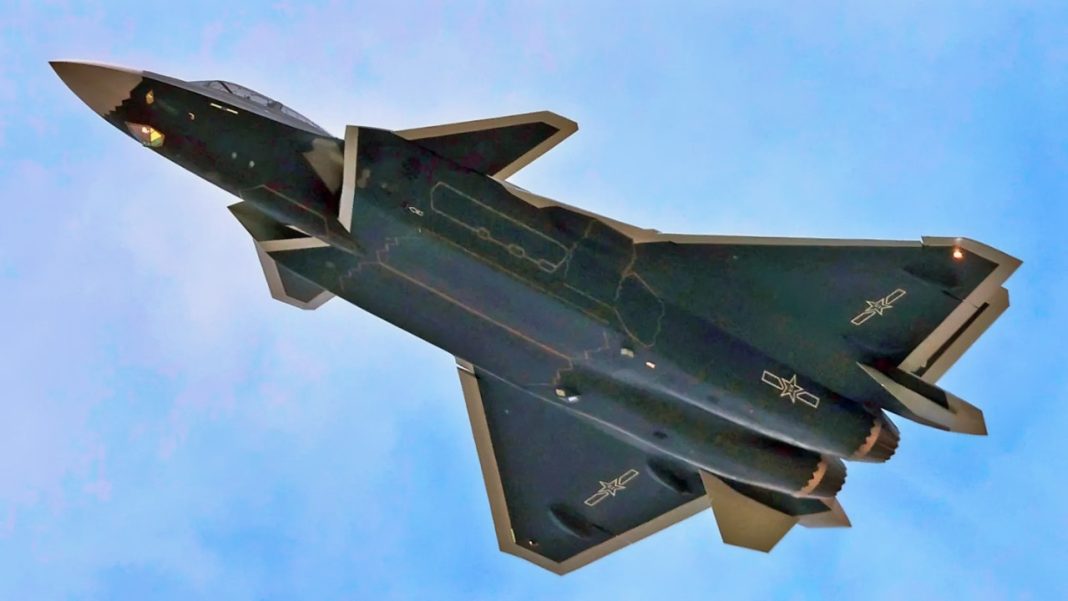China’s J-20 stealth fighter, dubbed the “Mighty Dragon,” reportedly made a daring and unexpected flight across the Tsushima Strait, which hosts some of the world’s most sophisticated radar and defense systems.
China’s J-20 Stealth Move Across the Tsushima Strait
U.S., Japanese, and South Korean forces closely monitor this area, located between Japan and South Korea. These forces use advanced systems like THAAD (Terminal High Altitude Area Defense) to detect and track aerial threats.
The striking part of the news? Chinese state television claimed that the J-20 completed this mission undetected. This report first appeared in Chinese media and not through international military sources. According to Chinese television, the J-20’s First Fighter Brigade carried out missions across both the Tsushima Strait and the Bashi Channel, which is located south of Taiwan.
This incident is notable because no U.S., South Korean, or Japanese radar systems formally reported the J-20. That silence has raised eyebrows, as these radar networks usually monitor even the smallest aircraft movements. However, each country might have tracked the fighter but chose not to acknowledge it publicly.
✈️ Game Over for Stealth? India’s Radar Detects F-35, China’s J-35 Faces Reality Check
This event, as reported, marks the first time a J-20 has appeared in the Tsushima Strait. The strait has historical importance, having witnessed the famous Russo-Japanese naval battle in 1905. Today, it serves as a key area in the modern-day defense structure of East Asia.
Doubts Around the ‘Undetected’ Claim
The idea that a stealth fighter could glide through such a fortified airspace without being seen is both impressive and suspicious. Chinese media reports suggest this as a triumph of China’s stealth technology. However, defense experts have noted that the absence of public confirmation does not necessarily mean the aircraft was truly invisible to radar.
The United States and its allies often track movements without disclosing them to the public. Therefore, it’s still feasible that observers spotted the J-20 but chose not to report it to avoid raising tensions or revealing intelligence techniques. Another possibility is that China exaggerated the scope or timing of the flight for propaganda purposes.
Bold but Controversial: China’s Stealth Entry into US EV Market via Morocco
Chinese state broadcaster CCTV aired several clips of the J-20 fighter and described the regions it patrolled. The broadcaster presented these clips in a way that strongly suggested recent activity, although it did not confirm any exact dates or mission details.
The region’s radar systems cover a wide area, especially due to the presence of key U.S. bases and vital maritime routes. So, even if the J-20’s reportedly undetected flight shows technological progress, it still raises several unresolved issues.
New Two-Seater J-20 Variant and Naval Movements
Alongside the report of the J-20 flight, recent sightings show that China’s two-seat variant of the J-20 may now be in active service. This updated version has a redesigned cockpit to include a second seat and features a darker paint scheme.
Photos and videos of this new model have surfaced on Chinese social media. These updates show that China is making progress in its stealth fighter program—not just with the J-20 but also with other models like the J-35, which China is developing for both carrier-based and land-based missions.
After initial rumors in 2018, observers confirmed the existence of the twin-seat J-20 model in 2021 when they spotted it performing taxi tests. Its purpose remains unclear—some experts suggest it could support training, while others believe China may have designed it for electronic warfare missions.
🎯 China-Pak jet goes global: JF-17 makes explosive UK debut at RIAT with stealthy new look
Interestingly, news of the J-20’s flight surfaced just days after Japanese defense forces spotted a Chinese submarine support vessel in the Tsushima Strait. According to reports, a submarine rescue ship from China’s navy, marked with the number 841, sailed through the strait toward the Sea of Japan. Japan’s Maritime Self-Defense Force closely monitored the vessel using patrol aircraft and fleet units.
This combination of air and naval activity in such a sensitive area has raised questions across the defense world. Both events demonstrate how China is continuing to operate in strategic zones where U.S. and allied military forces are heavily present.

